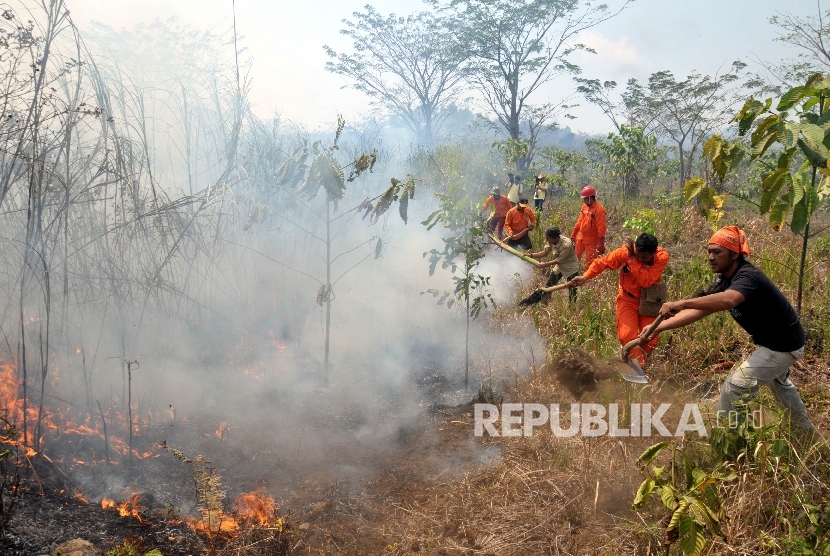REPUBLIKA.CO.ID, JAKARTA -- A researcher from the Center for Southeast Asian Studies, Kyoto University, Japan, Prof. Kosuke Mizuno, stated that local wisdom should be respected to prevent forest and peatland fires. He acknowledged there are a lot of local wisdoms, and each region is different. "But they should be respected," Prof Mizuno noted at a discussion on Peat Management Policy in Indonesia in terms of Ecological, Economic and Social Aspects held in Jakarta on Tuesday.
According to him, one of the local wisdoms that can be applied to prevent peat fires is to plant sago tree, which is very peat-friendly and grows in wetlands.
Research conducted by his team since 2008 in Riau shows that Indonesian people are divided into two groups, namely those who live together with peatlands but do not utilize the lands optimally as they work as traders or fishermen.
The second community includes those who use the lands for creating rice fields through intensive efforts. According to him, the results show that local people are more harmonious than migrants who live in peatlands.
Since the 1930s, local people have been living harmoniously with peatlands, but in the 1980s, there were a lot of logging but no major damage.
In the 1990s, mass destruction took place because people started to open industrial timber estates and acacia plantations.
"People are busy cutting timber and planting oil palm, because they are more profitable. However, it is difficult to materialize them because of frequent land fires," he remarked, adding that the answer to the problem would be to return to local wisdom and to do restoration based on it.
Peatland restoration is a national program which, according to Prof. Mizuno, is partially successful as some have not shown progress.
Geomagz mentioned that peat can be found throughout the Earth's surface, with a total area of about 394 million hectares. The largest peatland, of 170 million hectares, is in Canada, followed by Russia (150 million hectares), United States (40 million hectares), Indonesia (26 million hectares), and Finland (10.40 million hectares). The rest is spread in various countries.
Finland has developed the best peat-fired power plant in the world.
In tropical region, 31 million hectares of peat are spread over Asia, America, and Africa.
In Indonesia, peat is the second largest type of soil, which is spread over the east coast of Sumatra, the southern and western coasts of Borneo, the southern coast of Papua, and slightly in Sulawesi, Maluku and Java.
Based on Indonesia's Land Map (1976), peat was included in a wetland unit of 35 million hectares comprising tidal, peat, and mineral lands (marine and freshwater).
The total area of peatland in Indonesia is estimated to reach 16 million hectares. Meanwhile, based on an estimation of the Department of Mining and Energy (1989), Indonesia's peat area reaches 17 million hectares, with an estimated reserve of 170 billion cubic meters of peat with an assumed average thickness of 1.0 meters.
Currently, the Geological Resource Center, Geological Agency, has published a peatland distribution map of Indonesia, with a scale of 1: 5,000,000. The map contains 62 locations of peatland density, along with their resource and calorie value.


